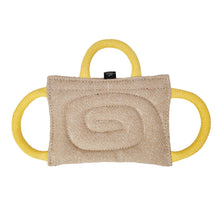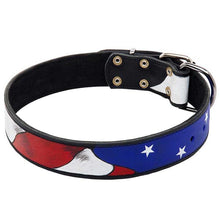When Should Your German Shepherd’s Ears Stand & What You Can Do If They Don’t

German shepherds are very recognizable in part due to their large, erect ears. As puppies, their tee-pee ears give them adorable character. As adults, their pointed ears contribute to their highly alert appearance.
When Do German Shepherd Ears Go Up?
German shepherd puppy ears may go up anywhere between 8 weeks and as late as 6 months. During this time, it’s not uncommon for their silky soft ears to go up and down. It’s also totally normal for one ear to be up at a time. And, some puppies will even alternate which ear is standing on any given day.
Their ears going up and down is an adorable part of puppyhood. However, it’s very unusual for a healthy puppy, whose ears were once standing up, to not have them go back up on their own if they go down. So, if you see your puppy’s ears going up and down when they bark, get excited, or get startled, you can be confident they will stand on their own once they are done teething.
If you’re concerned that your puppy’s ears are not yet up, the span of time between 8 weeks and 6 months can feel like an eternity. Especially if the ears have never gone up or have flopped down, with no sign of going back up.
However, it is important to know that the most common time for puppy ears to go up and down is while they are teething, between 4 and 5 months. By the end of 5 months, their ear cartilage should be strong enough to hold the ear up.
So, if your pup’s ears haven’t gone up by the time their adult teeth have erupted, it’s time to go over their diet and overall health with your vet to be sure that there isn’t an underlying problem. Some considerations include:
- Puppy nutrition
German shepherd puppies should be eating a large breed puppy food that contains high quality protein and the correct calcium and phosphorus ratios. Feeding too much calcium can cause hip dysplasia, but too little calcium can also cause other health problems.
Most high quality manufactured diets for large breed puppies will be nutritionally balanced but you should confirm that’s true about the food you’re feeding. The AAFCO defines the proper amount of calcium and phosphorus for growth in large breed puppies as:
- 0 to 4.5 g calcium per 1000 calories
- 5 to 4.0 g phosphorus per 1000 calories
- Calcium-to-phosphorus ratio 1:1 to 1.8:15
If this information is not on the package label, simply call the manufacture and ask to be sure you’re feeding the right food, even if it’s an “all life stages food” for a large breed dog (adult dogs expected to weigh over 50 pounds).
- Puppy health
There are some health reasons your puppy may have a floppy or “flabby” ear. Some health problems that can cause an ear to remain floppy are:
- Unbalanced diet
- Malnutrition
- Injury/trauma
- Infection or inflammation
- Parasites (in the gut or ear)
- Genetics
If you can, take a look at the parents and/or lineage of your German shepherd. If there are floppy ears in the line, your shepherd’s ears may never go up but they are still cute as heck. If there are no floppy ears in the line, you may be able to intervene. According to the American Kennel Club, the breed standard for a German shepherd’s ears is:
“The ears are moderately pointed, in proportion to the skull, open toward the front, and carried erect when at attention, the ideal carriage being one in which the center lines of the ears, viewed from the front, are parallel to each other and perpendicular to the ground. A dog with cropped or hanging ears must be disqualified. Seen from the front the forehead is only moderately arched, and the skull slopes into the long, wedge-shaped muzzle without abrupt stop.”
How to Get Your German Shepherd’s Ears to Go Up
If you puppy is healthy and done teething and the ears are still down, there are some things you can do to help them go up.
- Do not supplement calcium
Calcium is used for bone and teeth development, not cartilage. Too much calcium can result in serious health problems and imbalances of other vital minerals. A balanced diet is all you need.
- Help develop the temporalis muscle
The temporalis muscle is strengthened by chewing and also one responsible for holding up the ears. It’s important that German shepherd puppies be given plenty of chews and chew toys before and during teething to help develop this muscle.
- Glucosamine
Glucosamine can help build cartilage. While a balanced puppy diet doesn’t require supplementation, you can talk to your vet about it if there is a problem with the ears standing up. There are also natural treats that are high in glucosamine such as bone broth, chicken feet, and duck feet.
- Healthy antioxidants
Antioxidants containing vitamin C can help reduce stress on the body and build cartilage. Fresh treats that include antioxidants include carrots, apples, pumpkin, sweet potatoes, celery, and watermelon.
- Taping the ears
If after your dog is done teething, and the ears have shown no signs of going up on their own, you may want to consider taping them. Some dog owners have had great success but if the problem is trauma or genetics, taping may not help.
There are many style preferences for taping the ears so if you know someone whose had success or know of a vet that can help, certainly seek them out. In a nutshell, this is how to tape the ears:
- In a vertical position, wrap the ear around an ear form or foam hair roller or cardboard cylinder using 2” thin surgical paper tape that tears easily (NEVER use duct tape or any other harsh sticky tape, which will damage the ears).
- In a horizontal position, attach a popsicle stick to the top of both ears to help stabilize them.
- Re-wrap each time your pup rips them off until they eventually ignore it.
- Check and re-tape weekly until the ears stand on their own. If they are showing no signs of getting stronger or are not standing by 7-8 months, most experts will agree that they will never go up.
We hope you find this article helpful. We love all German shepherds and think they are the best breed ever-even those with floppy ears!
You may also like: How To Clean Your Dog’s Ears At Home
























